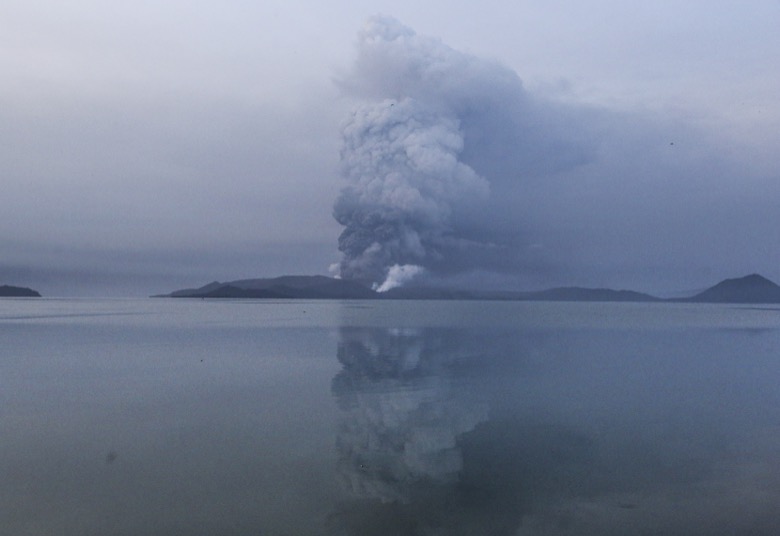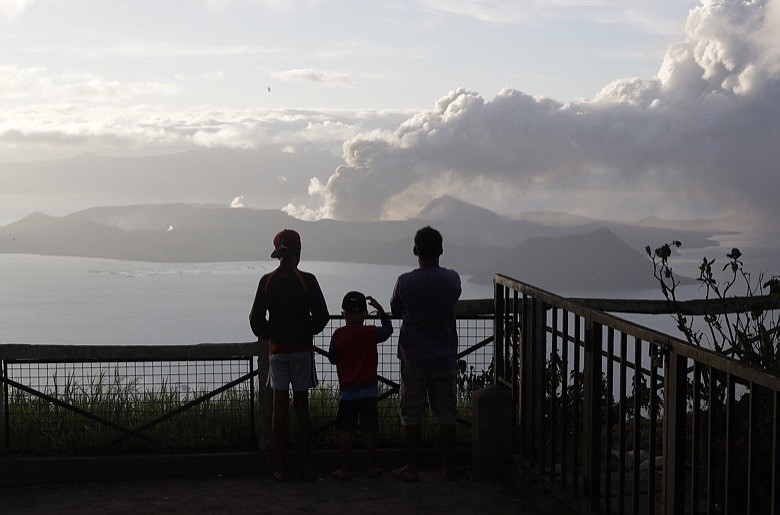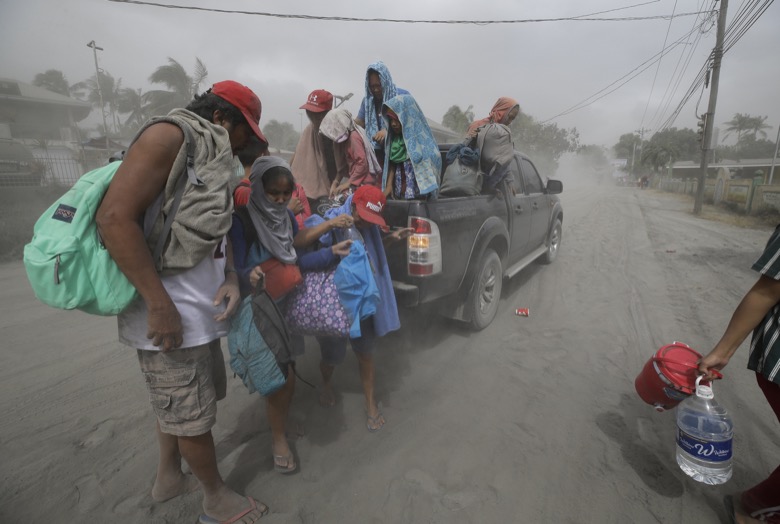TAGAYTAY, Philippines (AP) - A volcano near the Philippine capital spewed lava into the sky and trembled constantly Tuesday, possibly portending a bigger and more dangerous eruption, as tens of thousands of people fled villages darkened and blanketed by heavy ash.
The continuous restiveness of the Taal volcano and several new fissures cracking the ground nearby likely means magma is rising as well and may lead to further eruptive activity, the Philippine Institute of Volcanology and Seismology said. The volcano was spurting fountains of red-hot lava 800 meters (half a mile) into the sky, and the massive column of ash and volcanic debris at times flashed with streaks of lightning.
The alert level since the eruption began Sunday has been 4, indicating a hazardous eruption is possible in hours to days. Level 5, the highest, means such an eruption is underway.
About 50 volcanic earthquakes were detected over eight hours Tuesday, indicating rising magma, the institute said. It also warned heavy and prolonged ashfall was possible in nearby villages.
"The speed in the rise of magma is important (in determining) when the volcano will have a strong eruption and if it will slow down and freeze," said Renato Solidum, who heads the institute. "As of now, we don't see activities slowing down and the earthquakes still continue."
The picturesque volcano in the middle of a lake in Batangas province south of Manila rumbled to life Sunday in a powerful explosion that blasted a 15-kilometer (9-mile) column of ash, steam and pebbles into the sky. Clouds of volcanic ash blowing over Manila, 65 kilometers (40 miles) to the north, closed the country's main airport Sunday and part of Monday until the ashfall eased.
The government's disaster-response agency counted more than 30,400 evacuees in Batangas and nearby Cavite provinces. Officials expected the number to swell.
Government work was suspended and schools closed in a wide swath of towns and cities, including Manila, because of the health risks from the ash. The eruption has not directly caused deaths or major damage. The death of a driver in a crash on an ash-covered road was linked to slippery conditions.
 Taal volcano spews ash in view from Batangas, southern Philippines on Monday, Jan. 13, 2020. Red-hot lava gushed out of a volcano near the Philippine capital on Monday, as thousands of people fled the area through heavy ash. Experts warned that the eruption could get worse and plans were being made to evacuate hundreds of thousands. (AP Photo/Gerrard Carreon)
Taal volcano spews ash in view from Batangas, southern Philippines on Monday, Jan. 13, 2020. Red-hot lava gushed out of a volcano near the Philippine capital on Monday, as thousands of people fled the area through heavy ash. Experts warned that the eruption could get worse and plans were being made to evacuate hundreds of thousands. (AP Photo/Gerrard Carreon)The small island where the 1,020-foot (311-meter) volcano lies has long been designated a "permanent danger zone," though fishing villages have long existed there. Those villages were all evacuated, though volcanology officials have called for a total evacuation of endangered communities within a 14-kilometer (8.7-mile) radius of Taal.
Taal's last disastrous eruption, in 1965, killed hundreds of people. It is the second-most restive of about two dozen active volcanoes in the Philippines, which lies along the Pacific "Ring of Fire," where most of the world's seismic activity occurs.
A long-dormant volcano, Mount Pinatubo, blew its top north of Manila in 1991 in one of the biggest volcanic eruptions of the 20th century, killing hundreds of people.
___
Gomez reported from Manila. Associated Press journalists Kiko Rosario in Manila and Aaron Favila in Tagaytay contributed to this report.

